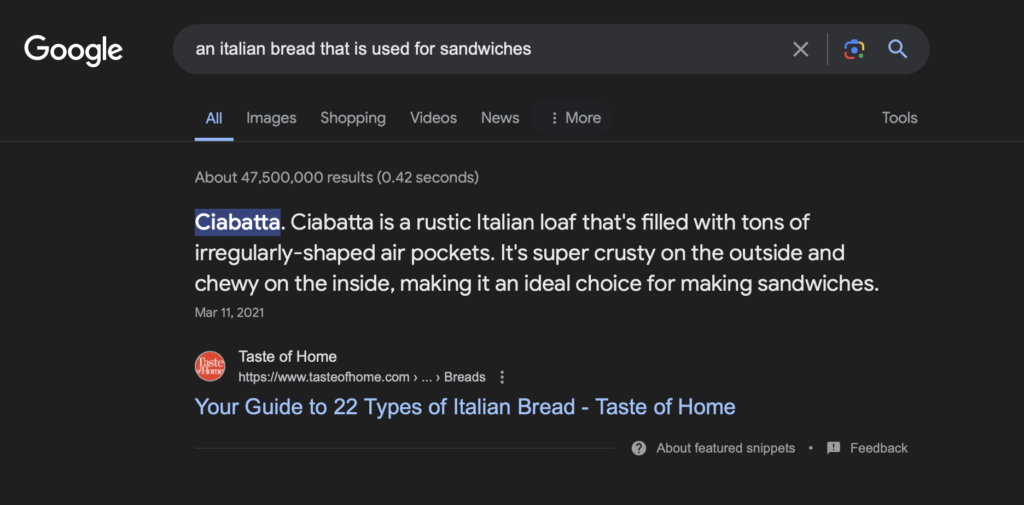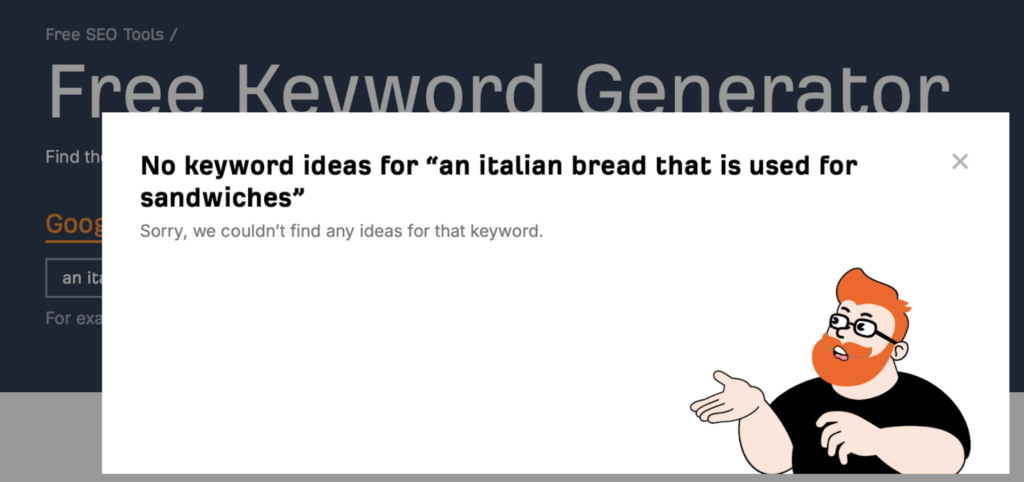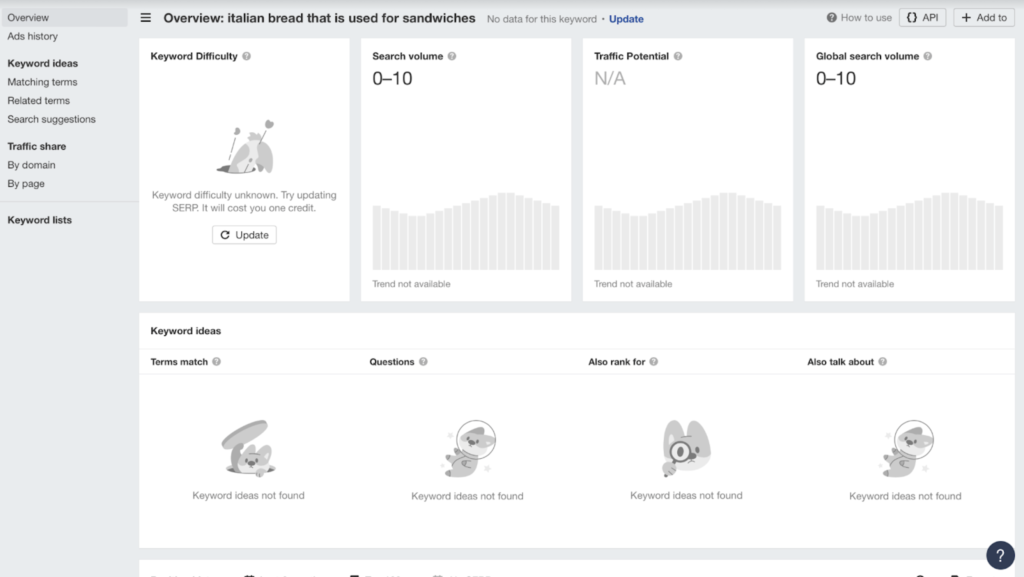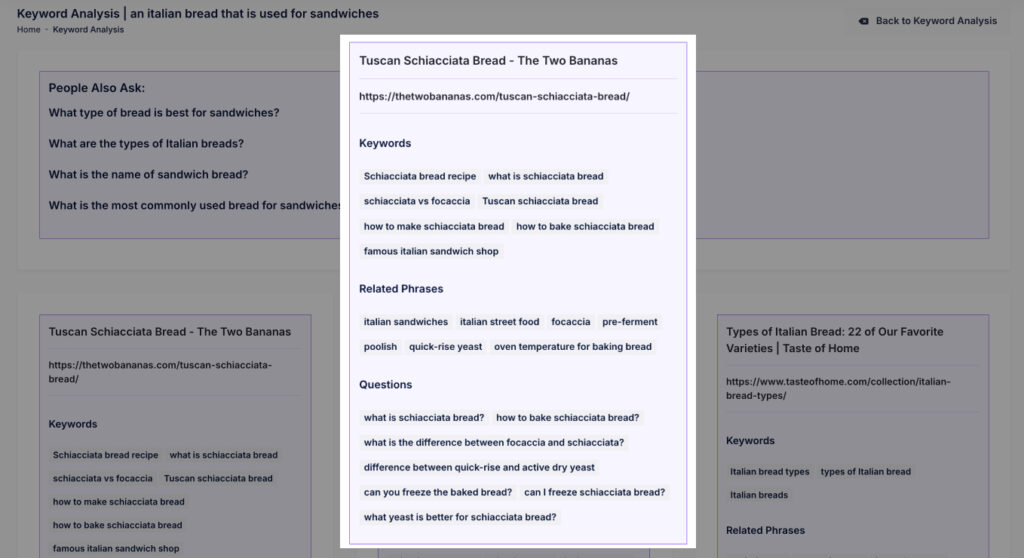First off, I’d like to say that SEO is just the ‘side effect’ of a high quality web page, which is all about QUALITY CONTENT.
Keywords are not magic woohoo things that you “research” them and include in your blog post and boom, you get traffic!
I guess there’s no need to mention that we no longer need to optimize a web page or article for certain keywords.
The reason is NOT ONLY following Google’s algorithm that a web page can rank without including search query.
The reason is that Google care about serving people’s search operation.
In this article, you will learn what is an SEO friendly article and how to write it.
Ranking signals
Since the RankBrain, Neural matching, BERT, and MUM updates, Google understands and ranks a page based on what it is about by looking at combinations of words that express different meanings and intents, words related to concepts (RankBrain), queries relate to pages (neural matching).
Your aim should be generating helpful content for your desired traffic – target readers – prospects. Also, your aim should not be seeing that we get traffic, your aim should be engage, so you can convert. What if you don’t know your ICP?
You should focus MAINLY on the content, UX, and speed on your website:
- If the traffic likes your content, they will consumes it and will stay on the page → you will have a low bounce rate.
- If the traffic likes your content, they will remember it, come back again, share it, and even refer to it → you will gain backlinks naturally and increase direct traffic.
- If the traffic likes the design and UX of your website, along with the overall content → they will spend more time on your site and consume more content on your website.
These 3 should be your main goal and these are some of the site-wide signals that Google consider for ranking. (See also: Google E-E-A-T)
So far, so good.
There’s no such thing as SEO bringing leads. It’s not SEO; it’s content that creates engagement, converts traffic to users, and brings leads.
📖 People who come from SEO really buy. Is that true? (no it’s not true, ready why)
If you create content for your target audience, providing information about what they intend to find and consume, it will create engagement and bring leads.
I always say that if you create quality content on your pages targeting your ideal customers, providing a solid solution to a problem (answering their search queries while considering their intent), your desired target will find, consume, and like your content.
Your aim SHOULD BE to be in front of prospects who will get to know your product exists, understand how it works, engage with it, and get in touch with you… This is what the content marketing is.
If your aim is seeing a number of clicks that will feed your ego, that’s another story.
Your end goal with SEO is to increase sales, right? Why would you solely care about the number of clicks? What you should care about is understanding your ICP, creating/writing for them, so you have a chance to convert them without even getting in touch with them (this not applies to early stage products).
Note: I’m not talking about news websites, vacancy listings, movie streaming, or any transactional business sites where traffic may equal revenue. Still, you need to keep the page updated, get reviews, use schema markups, optimize product descriptions, media files, FAQs, have fast loading site, live support, etc., to provide easy navigation on your site, let traffic know the way around, and convert.
Another note: Why you should not care much about the numbers of clicks? What if the audience you’re targeting is small? How would you expect more clicks?
Also, note that Google evaluates the helpfulness of content on a page level, not a site-wide level. This means you may have some pages your site that ranks poorly, but if you have one high-quality page, that specific page can rank well. However, this doesn’t mean that your whole site should be shitty; Google’s core ranking system still considers some signals at the site-wide level.
What is an SEO friendly article?
An SEO-friendly article is one that answers what a user intends to find. This intention could be to gather information, compare products before purchasing, or find answers to brand-related questions.
- An SEO-friendly article aligns with the intent of the search query.
- An SEO-friendly article uses language accessible to a general audience.
- An SEO-friendly article is optimized to rank for more than one search query.
These are just a few, I didn’t mention most of the criteria like page design, readability, etc.
Here’s what an SEO friendly article looks like:

For providing an example for you, ciabatta bread came to my mind, and I thought, “what could I write to describe and find ciabatta in the SERP without mentioning it?”
I knew ciabatta would appear in the results. By looking at the entire context of the ranked article and my intent, Google understood what I was looking for; my intention was finding informational article.
If you check that query I searched, you’ll see that it has zero volume.


What I’m trying to say is that, for writing an SEO-friendly article with the intention to target customers, you should first understand whom you’re writing for and their intent for finding and reading your article. You should not just look for a keyword that has high volume and low KD to write an article about it. You should also know why you’re writing that article (know the intent of the article); if you don’t, it’ll be spaghetti, bunch of words that do not answer what’s your customers are actually looking for over the Internet.
PS: the example above was one of the challenges with ahrefs that I always personally faced. I couldn’t analyze the top-ranking pages for some phrases since it would show no data for the searched query. This was one of the problems that we wanted to solve with vevy.ai.

As you see, I searched the same query on vevy.ai (“an italian bread that is used for sandwiches”). This gave me the top ranking pages, their keywords, related phrases to the topic, and the questions that are implicitly answered in the article in a snapshot.
How to write an SEO friendly article?
So, back to the question, how do you write an SEO-friendly article that targets your customers?
Write a nice article, make sure you cover the topic fully, and actually talk about what’s been written in the title. Consider why you’re writing the article, who will read it, what value you want to create for your target, and the intent behind the search query and article (commercial, informational, navigational, transactional).
If you want to succeed in marketing, learn how to write; this applies to each department of marketing. LEARN. HOW. TO. WRITE.
Let’s break it down.
Your article creation starts with you knowing WHAT YOUR CUSTOMERS WOULD SEARCH FOR A FEATURE RELATED TO YOUR PRODUCT. For this, you should know your customers, do customer research, engage with them, understand their psychodemographics and psychographics. You understand this in the customer development stage.
Let’s say you’ve developed a payment tool called “MOTO transactions” (Mail Order/Telephone Order) where the customer provides you card details, authorizes you, and then you charge them on their behalf.
What would your prospect search for? They may not know the term MOTO transactions, or they may not even know if it’s possible to take orders and make payments through telephone or email. We can guess that our target audience has a website, they have no payment gateway integrated, and they want to take orders (these are just rough assumptions I made up).
They will search for:
- Card not present payment
- Accepting payments on behalf of the customer
- Processing credit or debit card transactions without the physical presence of the card
They are less likely to search for MOTO transactions.
So, you can write an article about ‘how to take online orders without website/payment gateway’. In this article, you will provide the ways of doing so and present your product feature → they become aware of the solution.
This article is product-related article. For your content strategy, you should mix the type of articles, you should not write only about product-related topics, but other topics that might interest your target customers.
Your article should be comprehensive enough for readers to find the answers they need.
If you check the top-ranked pages, you can understand what makes them successful: they are precise, giving you enough information what’s been promised in the title.
I’m talking about articles since this post is about SEO-friendly article. You should produce other content types too; content marketing is not solely about blog posts.
Keywords, related phrases, entities
What you should include in your article is the related phrases, entities, and synonyms—semantically related words that enrich the article’s keyword diversity. For example, if the main topic of your article is “accepting payments,” you should also use variations like “receiving payments” interchangeably, and also mention ‘PayPal’, ‘Stripe’, ‘payment forms’ as entities. As I always say, if you learn how to write good article, you’ll in any way include those related phrases, semantically related words naturally.
Entities and semantic keywords have always been part of language. We hear more about them now because search engines have become smarter. In the past, search engines matched only exact keywords. So, writers repeated specific words to rank higher.
Today, search engines understand context, intent, and how words relate to each other. They look for related terms, entities, and concepts, not just exact keywords. That’s why we’re encouraged to use related phrases and entities—it helps content rank better with modern search engines.
At vevy.ai, we’ve trained our model to give all the necessary words and phrases, including child keywords, synonyms, entities, related phrases for a given topic. Naturally including those keywords to an article helps classify your content and ensure it matches relevant search queries.
Wrap up: Learn how to write. Give value. Write thoroughly about what people want to read (what they type in the search input box hoping to find). DON’T TALK ONLY ABOUT YOUR PRODUCT → Talk about the solutions.
As you write an article, your focus should not be about how to use a certain keyword. Your focus should be creating a nice piece that people will read, remember, and care to share.
The article should focus on what people intend to read (and they don’t want to read about your product if they are not your fan)
Build content strategy.
I guess that’s basically it.
See ya later.

